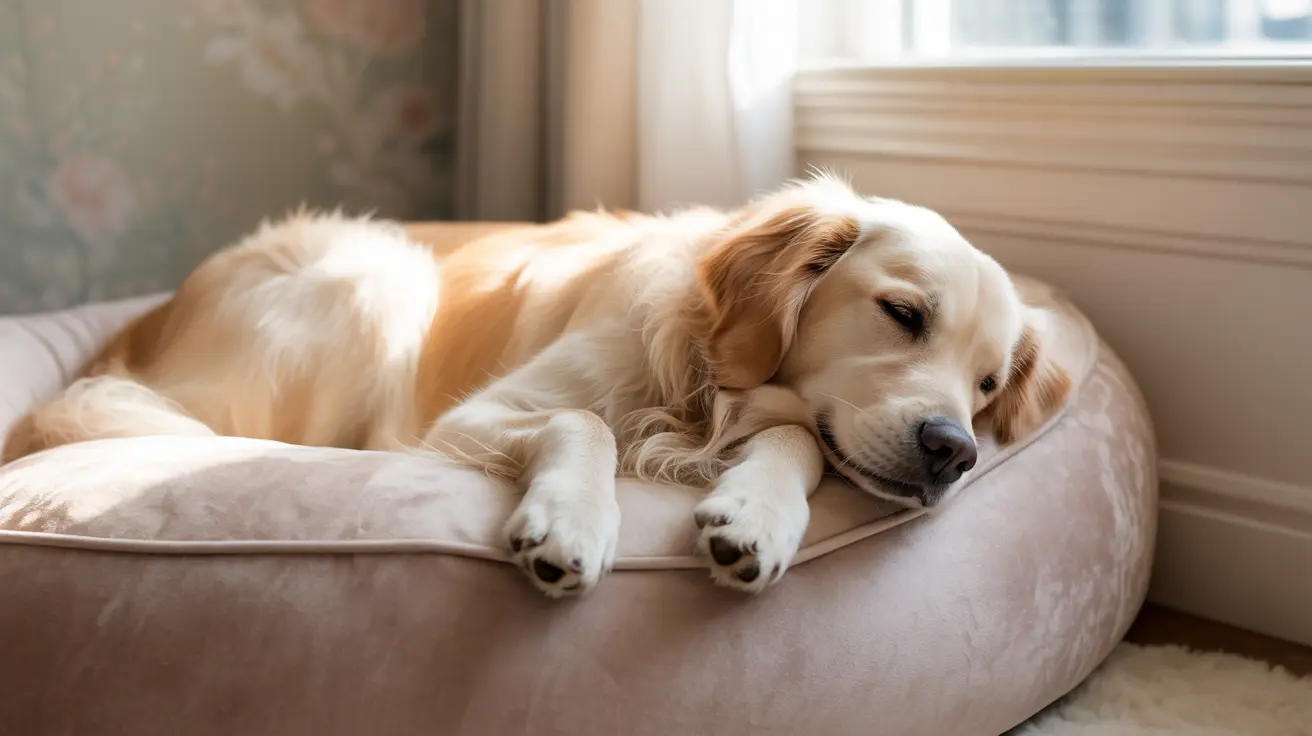Many pet owners wonder about their dogs' sleep habits, especially during the nighttime hours. While humans typically sleep in one long stretch, our canine companions have quite different sleep patterns that can affect both their rest and ours. Understanding these patterns is crucial for ensuring both you and your furry friend get quality sleep.
Whether you're a new dog owner or simply trying to improve your pet's sleep routine, it's important to learn about dogs' natural sleep cycles and how they differ from human sleep patterns. This knowledge can help create better sleeping arrangements and habits for everyone in the household.
Understanding Dogs' Natural Sleep Patterns
Dogs have a polyphasic sleep pattern, meaning they sleep multiple times throughout the day and night, unlike humans who are monophasic sleepers. This evolutionary trait dates back to their wild ancestors, who needed to remain alert for potential threats or hunting opportunities.
Adult dogs typically sleep 12-14 hours per day, but this rest is broken up into shorter periods rather than one continuous stretch. They cycle through periods of light sleep, deep sleep, and brief moments of wakefulness throughout the night.
Factors Affecting Your Dog's Night Sleep
Age and Activity Level
Puppies and senior dogs often have different sleep needs than adult dogs. Puppies may need more frequent potty breaks, while older dogs might experience age-related sleep disruptions. Additionally, a dog's daily activity level significantly impacts their ability to sleep through the night.
Environmental Influences
Various factors can affect your dog's sleep quality, including:
- Room temperature and lighting
- Noise levels in and around the home
- Comfort of their sleeping area
- Regular feeding schedule
- Exercise routine
Creating a Successful Night Routine
Establishing a consistent bedtime routine can help regulate your dog's sleep patterns. Consider these essential elements:
- Set a regular evening exercise schedule
- Plan the last meal several hours before bedtime
- Create a comfortable, quiet sleeping environment
- Maintain consistent bedtime and wake-up times
- Provide a designated sleeping area
Managing Sleep Disturbances
If your dog frequently wakes during the night, it's important to identify the cause. Common reasons include:
- Insufficient physical activity during the day
- Medical issues or discomfort
- Anxiety or stress
- Environmental disturbances
- Irregular feeding schedule
Frequently Asked Questions
Q: Do dogs sleep through the night, and how does their polyphasic sleep pattern affect their owners?
A: Dogs naturally sleep in multiple phases throughout the day and night. This pattern can affect owners as dogs may wake briefly during the night to reposition, check their environment, or respond to sounds. However, well-trained dogs typically adapt to their owner's sleep schedule.
Q: What are the benefits and drawbacks of letting dogs sleep in your bed?
A: Benefits include increased bonding and comfort for both dog and owner. Drawbacks can include sleep disruptions due to different sleep cycles, potential allergies, and possible territorial behavior. Consider your dog's size, temperament, and hygiene when making this decision.
Q: How can I ensure my dog sleeps well at night if they are easily disturbed or wake frequently?
A: Establish a consistent routine with regular exercise, feeding times, and bedtime schedule. Create a comfortable sleeping environment, address any anxiety issues, and ensure they have adequate physical and mental stimulation during the day.
Q: Are there any health risks associated with co-sleeping with dogs?
A: While generally safe, potential risks include exposure to allergens, minor disease transmission, and aggravation of existing respiratory conditions. Maintain good hygiene and regular veterinary check-ups to minimize these risks.
Q: What are some practical tips for improving sleep quality when sharing a bed with a dog?
A: Use a bed large enough for comfortable spacing, establish clear boundaries, maintain regular grooming, consider using a separate blanket for your dog, and ensure your dog has proper training to minimize disruptive behaviors.




